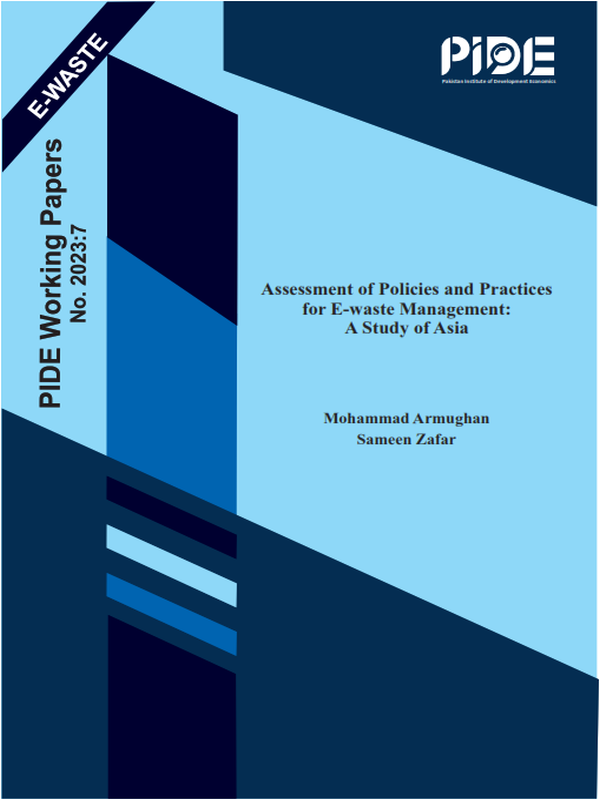Assessment of Policies and Practices for E-waste Management: A Study of Asia
ABSTRACT
Worldwide electronic waste (e-waste) is a prime contributor to environmental degradation and leads to adverse impacts on human health. Asia is the prime victim of ewaste. Asian countries have e-waste policies regarding illegal trade, dumping, recycling techniques, and extended producer responsibility (EPR) to ensure the safe and responsible disposal of e-waste by reducing its impact on the environment. However, countries are struggling to cope with e-waste. The study aims to assess e-waste policies in Asian countries and find best practices for e-waste management. The study also highlights the extent of e-waste generated in Asian countries and how much new electrical and electronic equipment (EEE) are put on the market. Based on analysis and issues related to e-waste policies in Asian countries, the study proposes a general framework for e-waste management. Lastly, a brief context of Pakistan is discussed. Precisely, the study encourages the feasibility and efficacy of e-waste management policies and practices in Asia.
1. INTRODUCTION
Climate change is the biggest problem across the globe. There are several contributing factors in climate change like burning of fossils fuels, industrial waste, transportation, household emissions, landfilling etc. One of the small category of solid, industrial and household waste is electronic waste (e-waste), dramatically impacts human health and environment. The rapid evolution of technology and hi-tech advancement has caused early obsolesce of electrical and electronic equipment (EEE) which has imposed immense effects on human health and environment by generating e-waste. In 2019, globally 53.6 million metric tons (Mt) of e-waste (eliminating solar panels) was produced (Forti et al., 2020). The presence of heavy metals such as mercury, nickel, lead, and cadmium in e-waste bring risk to human health and environment (Duan et al., 2009; Song et al., 2013).
Waste electrical and electronic equipment (WEEE) produced in developed nations are exported to developing nations (Iqbal et al., 2015). Due to the lack of infrastructure and no/limited legislation, a large quantity of e-waste is dumped into developing countries (Frazzoli et al., 2010). The export of e-waste from developed countries to developing countries causes adverse impacts on environment, economic, and social system (Widmer et al., 2005). The result of economic development, industrial revolution, consumer affordability, and technological advancement in 21st century has brought a spike in demand for all types of EEE. Today, approximately every household has several EEE such as a refrigerator, air conditioner, television, microwave oven, etc. Moreover, extensive internet usage has brought enormous utilisation of information and communication technology (ICT) gadgets like laptops, personal computers, tablets, and smartphones (Baldé et al., 2017).
Conversely, the lack of proper e-waste recycling, inappropriate disposal practices, and no/limited e-waste legislative policies add fuel to the fire. The e-waste is illicitly exported (as used item) from Australia, United States of America (USA), Germany, United Kingdom (UK), Canada, Belgium, Netherlands to India, China, Pakistan, Indonesia, Malaysia, Philippines, Ghana, Hong Kong, Nigeria (Sthiannopkao & Wong, 2013; Baldé et al., 2017). Overall, domestic and imported e-waste is handled crudely like burning openly, grill heating, coal-fired, and filtrate using acid baths to extract valuable metals. Subsequently, residuals from extraction process are dumped into land and water, polluting the environment and causing serious health issues (Sthiannopkao & Wong, 2013).




